AMD 780 Integrated Graphics Chipset Review
AMD 780 Integrated Graphics Chipset
AMDs latest chipset has the most powerful integrated graphics available but does that make it the best platform to choose?
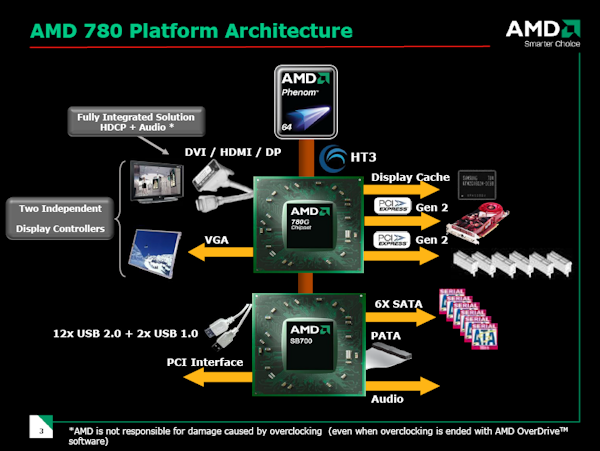
Verdict
Key Specifications
- Review Price: £58.75
On Tuesday AMD launched its latest platform for the AM2 and AM2+ CPUs, the 780 chipset. Its big selling point is integrated graphics that is more powerful than anything we’ve seen before and the inclusion of ATI’s Universal Video Decoder (UVD) for offloading the intensive task of decoding video from your CPU. Or, in other words, this new chipset should make for the perfect media centre (or Home Theater PC, if you’re American).
Of course, there are other possible uses for the 780 platform. As a small, low power, low cost chipset with integrated graphics, it is perfect for all manner of business and home PCs. What’s more, with the addition of hybrid graphics it offers the most powerful 3D graphics platform for the price. At least, so ATI claims. We’ll find out if all this is true a bit later but first let’s look in a bit more detail at what new features 780 brings to the table.
The 780 platform, or chipset, actually consists of two chips often generically referred to as the north bridge and south bridge. In the case of 780, the north bridge includes the integrated graphics, Hyper Transport link to the CPU, and PCI-Express controller and comes in two variants, the 780G that we’re looking at today, and the 780V, which uses a slower version of the integrated graphics.
780G and 780V are the first integrated graphics cores to support Shader Model 4.0 (DirectX 10) so all the latest games should be playable on these platforms, assuming you turn the details down low enough. As AMD still maintains the ATI name for its graphics parts, the graphics cores themselves are to be known as ATI HD Radeon 3200 and 3100 for the 780G and 780V, respectively. 
In terms of graphical power, the 780G is near identical to the old HD 2400 including as it does 40 stream processors. Although the 2400 was no great performer compared to other discrete graphics cards, having this level of graphical power on an integrated chip is unheard of and as such is not to be sniffed at.
Both cores now include the UVD and can offload MPEG-2, H.264 and VC-1 video at up to the full-HD resolution of 1080p. So no matter what sort of HD-video you throw at it, your system should be able to cope. The only problem being, you need to use specific software that supports the hardware acceleration, like Cyberlink PowerDVD, to take advantage of this. That said, there’s currently no support at all for Blu-ray playback in Windows Media Center so you’ll have to use separate software to play these discs anyway.
Output options for the integrated graphics are very impressive with HDMI, DVI, VGA and DisplayPort all supported. All the digital outputs include HDCP support so no matter which display you choose you’ll be able to watch protected HD content like Blu-ray discs. The only downside is, although two displays can be used at once, VGA has to be one of the options, which limits your options somewhat.
If you do decide the integrated graphics is not powerful enough, you have two options. Either you add in any old discrete graphics card and turn the integrated graphics off, or you can add-in an ATI HD Radeon 3450 and take advantage of the 780’s other big trick, Hybrid Crossfire.
Like regular Crossfire, this uses two graphics chips to split the task of rendering a 3D scene to increase performance. Because of the way Crossfire works, it’s only sensible to run Crossfire with similar performing graphics hardware (otherwise the slower chip becomes a bottleneck to the faster one), which is why Hybrid Crossfire is only available with the HD 3450.
There’s also no support for a system like nVidia is developing with its Hybrid SLI platform whereby any discrete graphics card can be plugged in and the system will switch between the integrated graphics and discrete card depending on system demand – the advantage of this being you can save power by using the integrated graphics while just doing desktop work but you still have the 3D performance of the discrete card to play games in their full glory. Support for this may be coming in the future but because of the massive driver development involved it’s not being enabled yet. 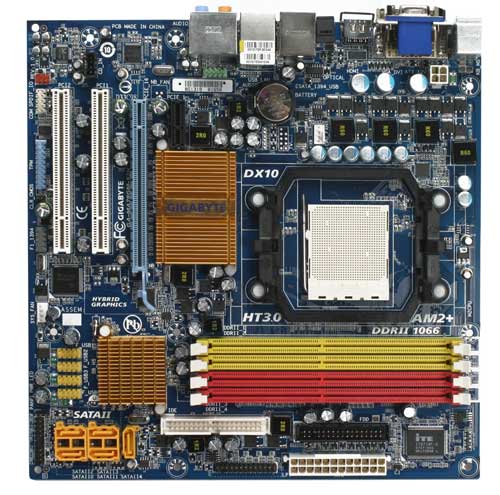
The south bridge, in general terms, controls the communication side of things, so it includes the hard drive, optical drive, and USB controllers, but also handles things like audio.
Although the new SB700 south bridge has been announced along with 780G and 780V, it is actually independent and will be a part of other upcoming chipsets from AMD. It brings with it support for twelve USB ports and six SATA ports (up from eight and four on SB600) and claims improved transfer speeds for both, which sounds good but actually just brings it more in line with what other chipsets can offer.
The same audio controller as before is onboard so you get support for 5.1 channel DVD quality Dolby Digital or DTS and you can use the 780G’s HDMI connection for passing this audio signal out to a TV without the need for any additional wires. Unfortunately, this setup can’t cope with the 7.1 channel DTS MasterHD or Dolby TrueHD that you can find on Blu-ray or HD DVD discs so you won’t be able to get the absolute best sound quality possible. It’s not going to be half bad though!
AMD has also released a new CPU to accompany this platform. It’s called the Athlon X2 4850e and is the fastest of AMDs low power range that have a Thermal Design Power (TDP) of 45W. Subsequently it runs very cool and quiet and coupled with the passively cooled, and thus silent, chipset it makes for a perfect media centre setup. In terms of specs, it can run at up to 2.5GHz and has 512KB of L2 cache per core so performance should be similar to most regular Athlon X2s.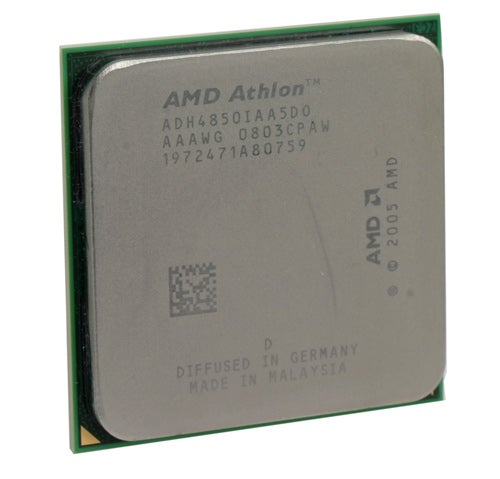
For our testing we were provided with a GA-MA78GM-S2H motherboard made by Gigabyte. Overall it’s a reasonably well laid out board with most of the features you’d want, we did have a couple of problems though. 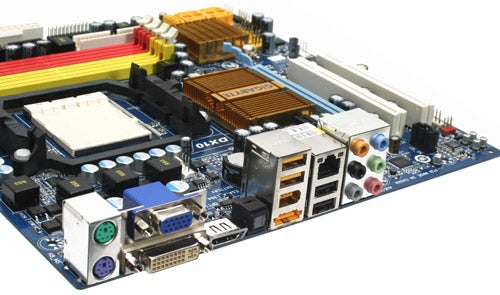
Gigabyte still insist on putting two PS2 ports, for both old keyboards and mice, on the back of its motherboards and while we still appreciate one for the keyboard, the mouse connection is largely deprecated and we’d prefer to see a couple more USB ports in its stead. This is especially true of this board as it currently only has four USB ports. 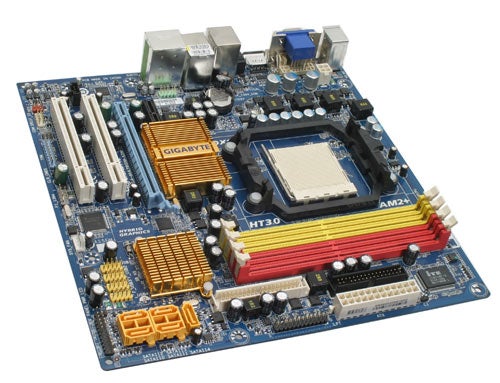
Also, another repeat offence from Gigabyte is the positioning of the SATA ports. They’re right in line with the graphics card slot, which means you can’t install a large graphics card without losing access to some of these ports. Okay, you’re not likely to use a large graphics card with this motherboard but it’s still an easy fix to just lay the connectors down on the edge of the board.
Video is well catered for with HDMI, DVI, and VGA video connections on the back plate. There’s no DisplayPort, which may be of concern to some but it would be harsh to knock points of for this.
Being a system that’s likely to be used in a media centre, we’ve given our testing a more multimedia slant, including video quality, video offloading, and power consumption tests as well as the usual performance based benchmarks. Due to time constraints we’ve not been able to compare with other competing platforms so over the coming weeks we’ll get to task testing alternatives to see how they stack up then we will revisit the topic in a full feature article soon.
We started off by running our usual set of 2D performance benchmarks and we weren’t surprised to see it was one of the slowest platforms we’ve tested in a while. However, we’re not comparing similarly priced systems in our graphs. It’s also worth remembering that with the video offloading capabilities of the chipset and the otherwise light work the CPU will be doing, it is still going to be plenty fast enough.
Next we rattled through the 3D portion of our testing, running Call of Duty 2, Counter-Strike: Source, Enemy Territory: Quake Wars, and Crysis. Bearing in mind the limited capabilities of the onboard graphics, for all but Crysis, we turned all in-game settings to medium and kept anti-aliasing off while Crysis required us to use low image quality settings throughout. We tested at just one resolution, 1,024×768, which is close to the resolution of a 720p TV screen so it gives us a fair reflection of what gaming on an HDTV would be like. 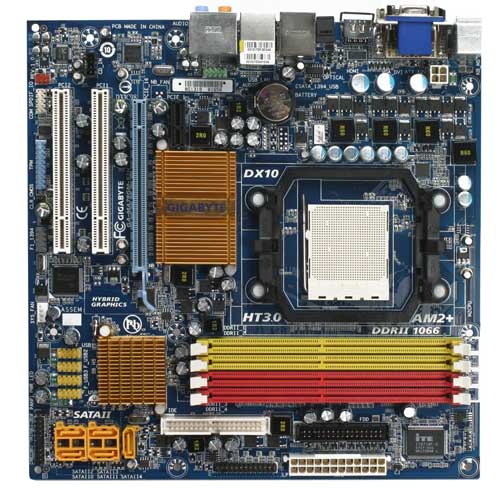
And the results?
Well unfortunately, it looks like onboard graphics still isn’t a viable option for proper gaming regardless of how low you set everything. Even with Hybrid Crossfire enabled, 780G struggled to reach playable framerates and with it turned off it was a complete waste of time. Take into account that no one would want to play games at these appalling image quality settings and the case becomes even less convincing. In fact, we’d go so far as to say AMD should scrap future development on getting more performance out of Hybrid Crossfire and concentrate all its efforts on developing the discrete/onboard switching version mentioned earlier.
So if 780 isn’t for gaming, what is it for? Well, from the results of the HQV and HD HQV video playback quality test, it isn’t a dead cert for an HTPC either. In fact, we were quite disappointed with the results we obtained. Whether this was a driver issue that can be fixed later, we’re unsure and it’s something we’ll investigate further, but it’s certainly something AMD should be concerned about especially considering how good the chipset is at offloading video decoding.
Of course, the ultimate question is whether the platform is any good and although we’ve belittled it over that last couple of paragraphs that doesn’t mean we don’t actually like it. In fact we think it’s the best integrated graphics platform currently available. When you take into account the better-than-the-rest 3D performance, flawless video offloading and very low cost of the system it seems near unbeatable. It’s just that it needs a few tweaks before it’s perfect. Hopefully, with a couple of driver releases that will soon be the case.
”’Verdict”’
AMD’s 780 chipset is without doubt the best integrated graphics platform on the market and it could make for an awesome media centre PC. However, that doesn’t mean it’s without flaws. Although it has the best onboard graphics available, it still isn’t able to play modern games at the framerates and quality we want and its mediocre video playback quality doesn’t help either. Let’s just hope a couple of new drivers can sort these issues out.
—-
”’Addendum”’
After publication we realised we had used only the low power CPU during our gaming tests and we were intrigued to know whether this was having an impact on performance. So, we popped in a faster CPU and ran through our tests again.
As the revised graphs now show, the faster CPU does indeed increase performance by a noticeable amount – at least in most of the tests. However, our original conclusions still apply as all the games were run at low resolutions with medium to low in-game detail settings so the gaming experience is still pretty poor. Yes, it’s better than any other integrated platform out there and it will play all the latest games – something which many rivals can’t do – but not until we see this sort of performance at higher resolutions, like 1,280×1,024, and with higher detail settings will we consider it a truly viable gaming platform.
”’Gaming Performance”’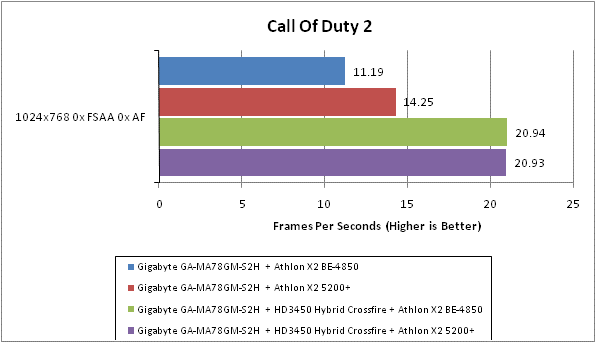
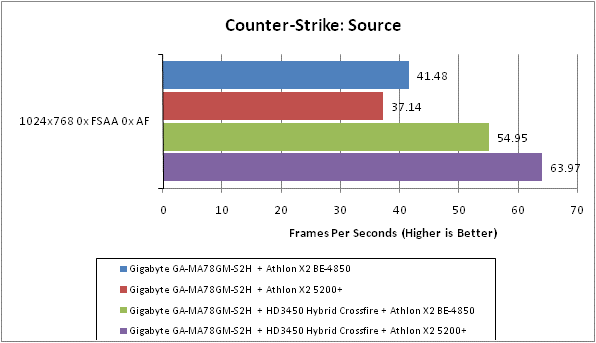
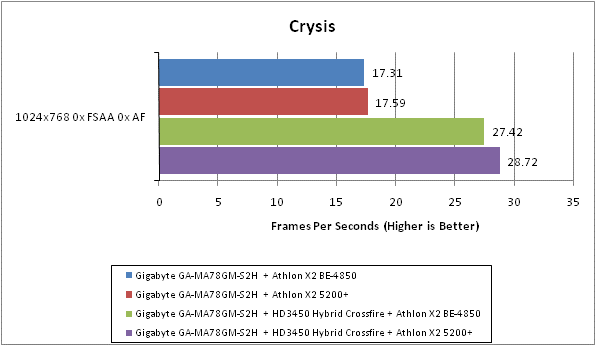
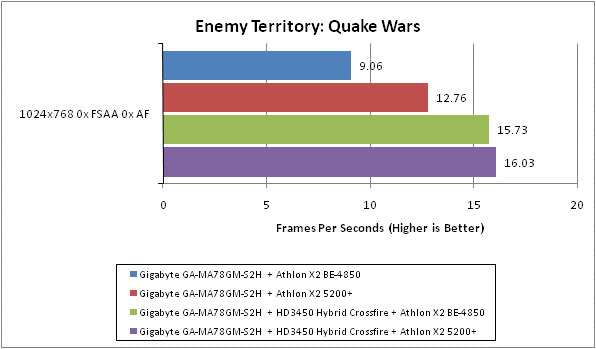
”’Productivity Performance”’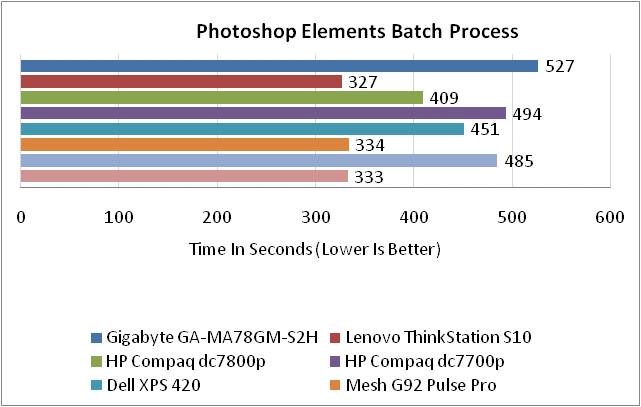
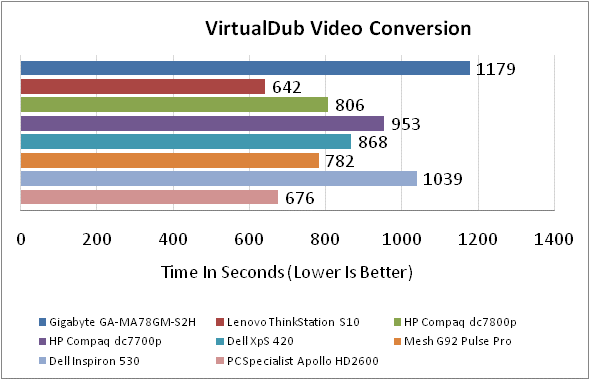
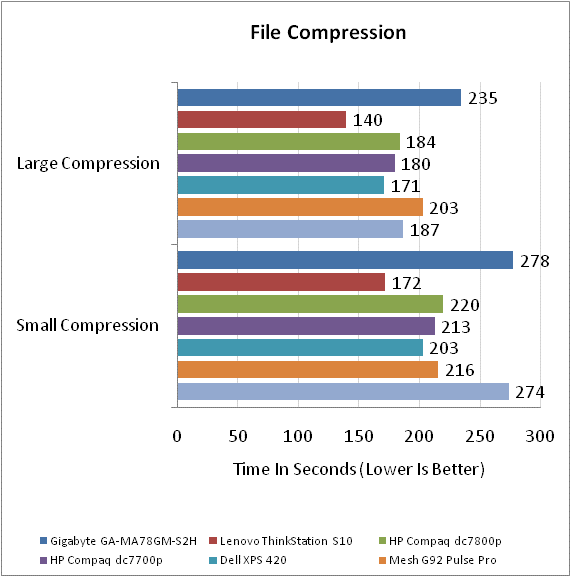
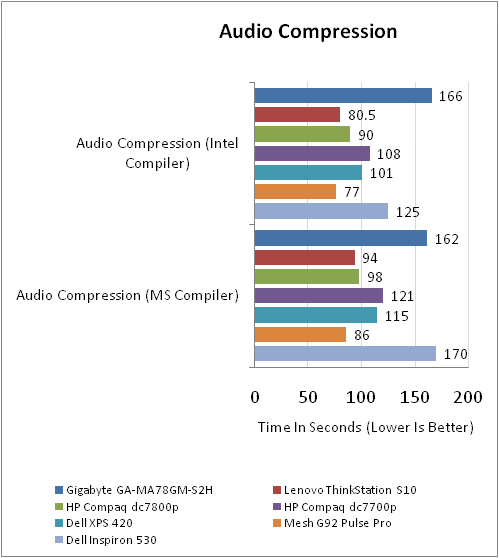
”’Blu-ray edition of Casino Royale played at 1080p”’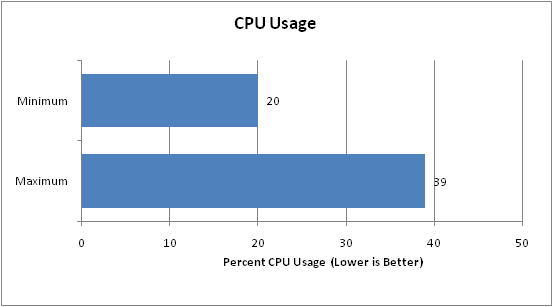
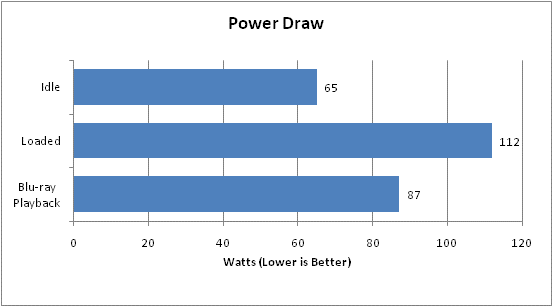
”’HQV”’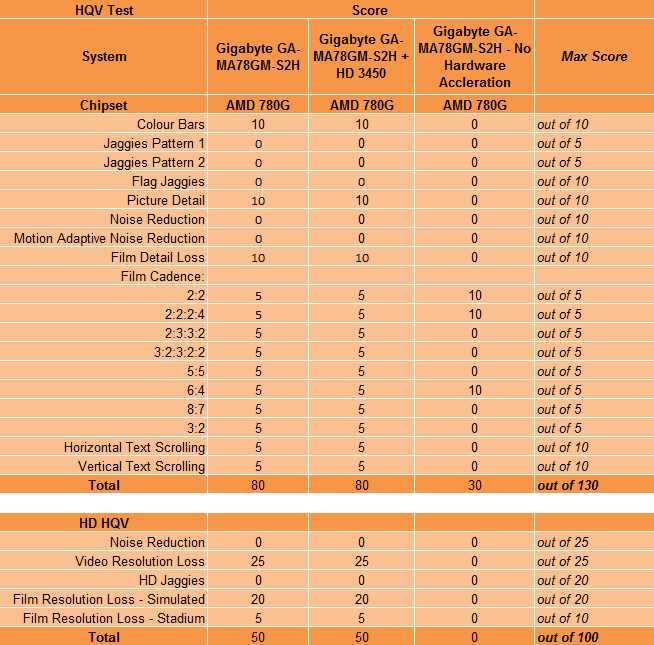
Trusted Score
Score in detail
-
Value 9
-
Features 9
-
Performance 7

